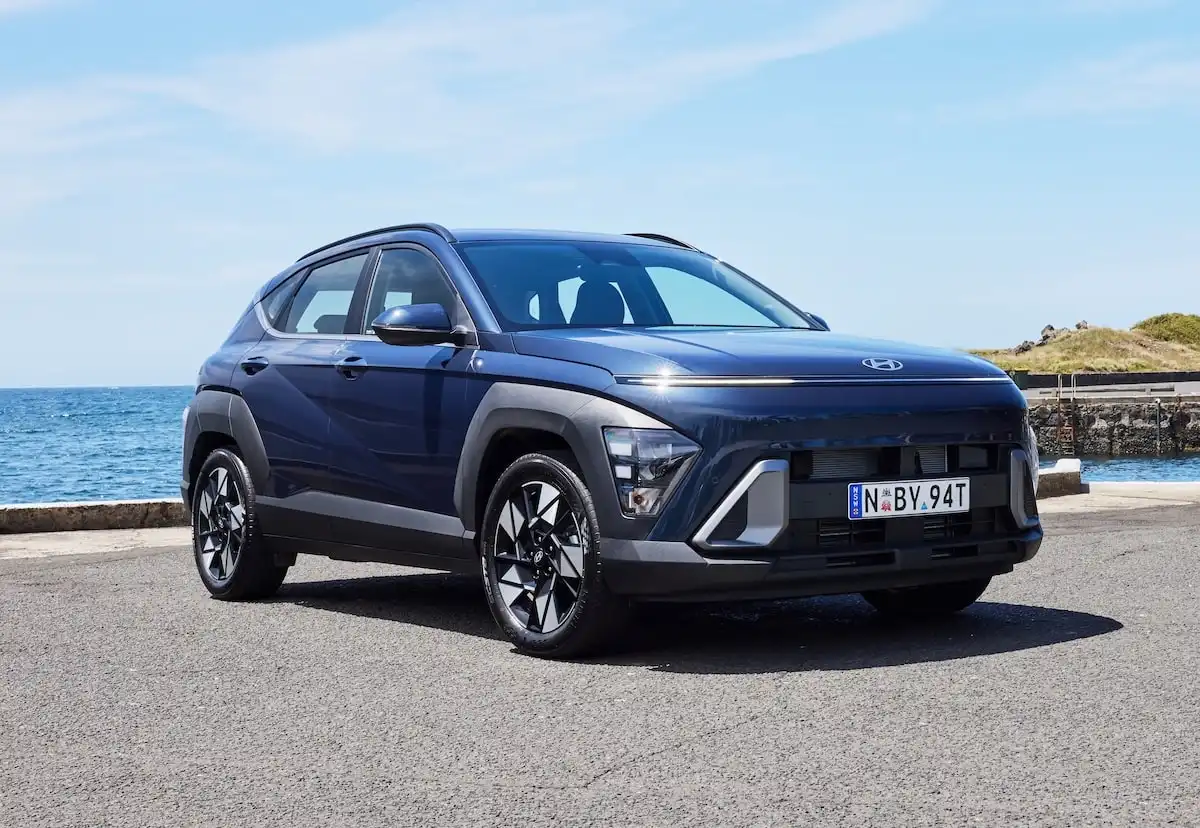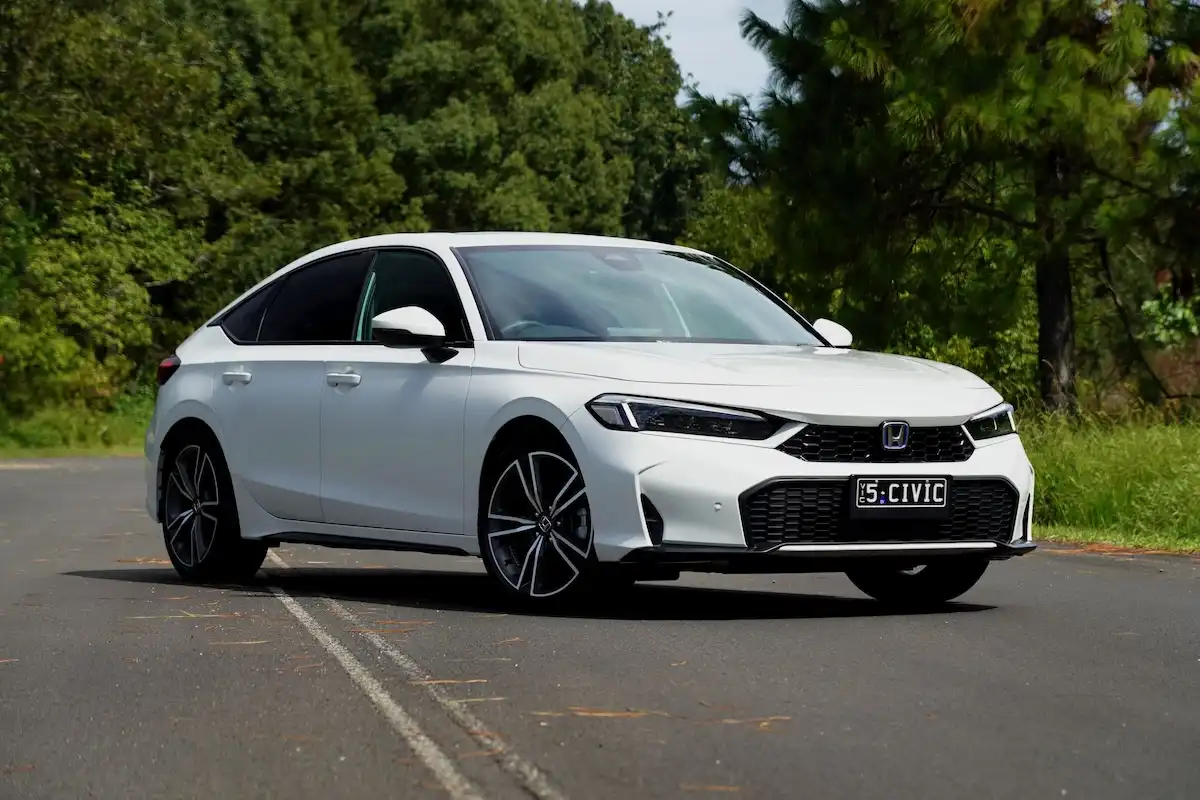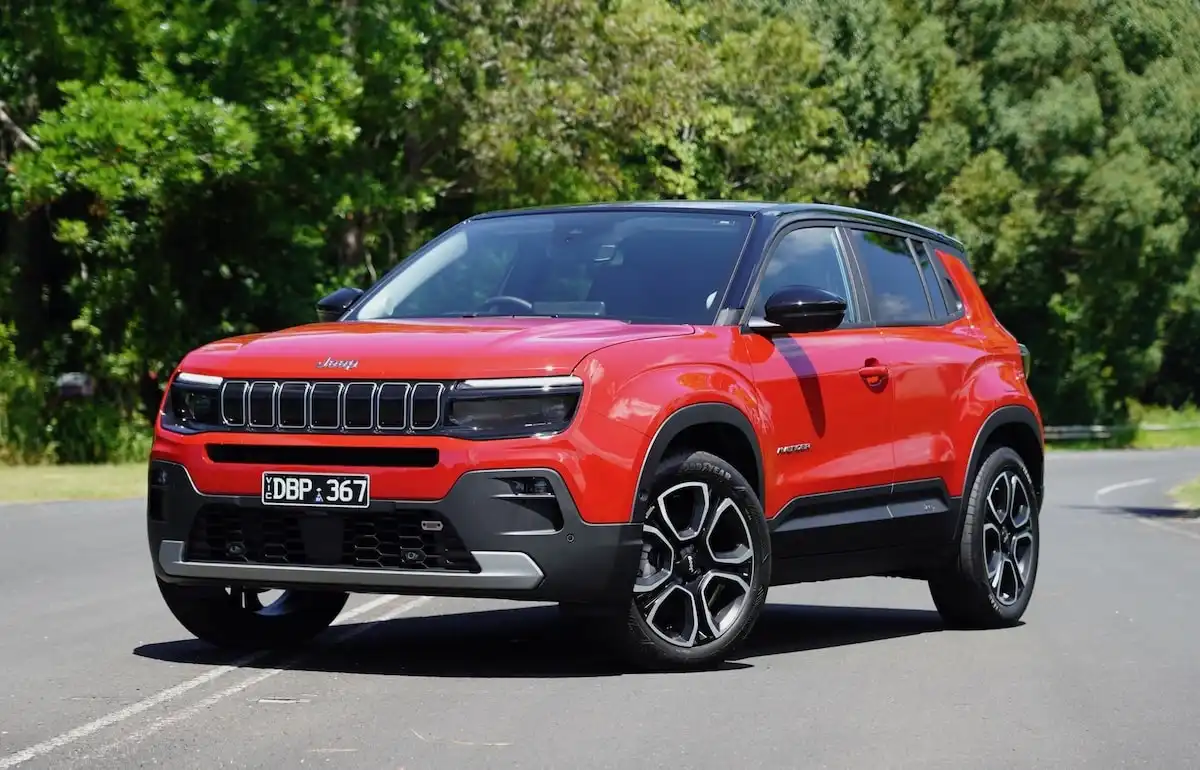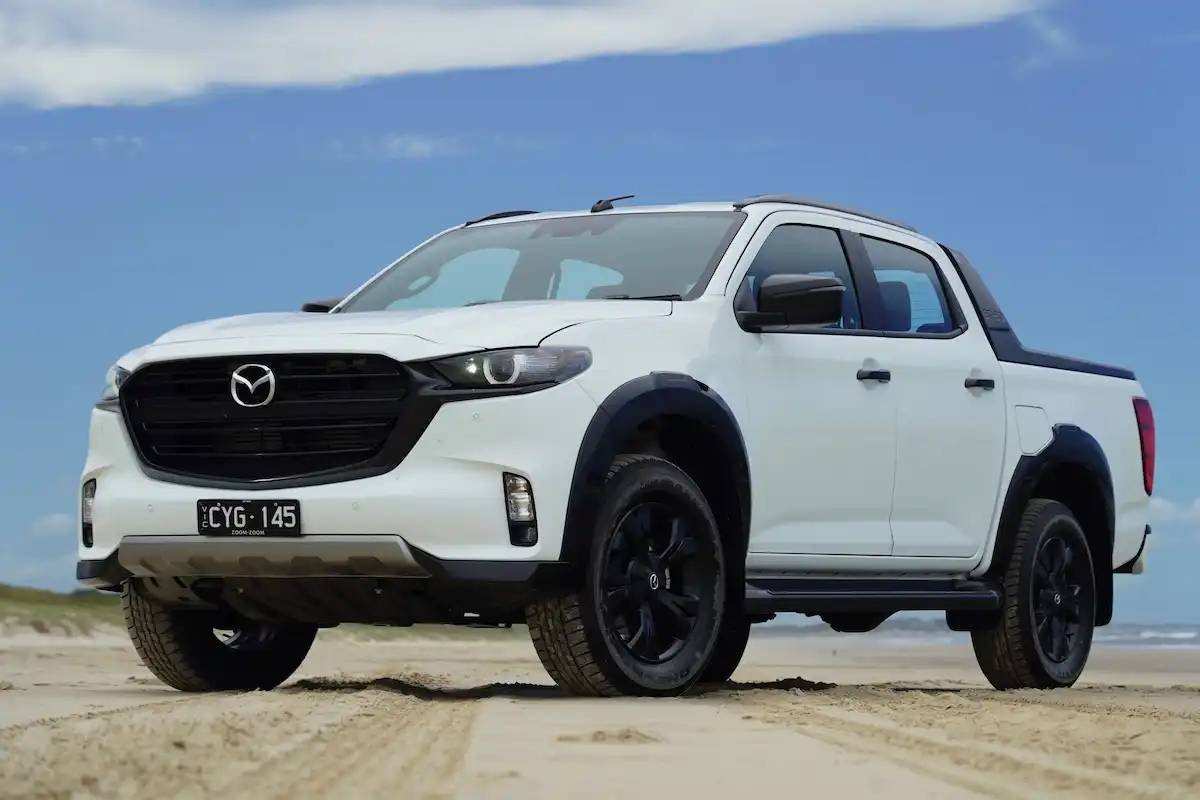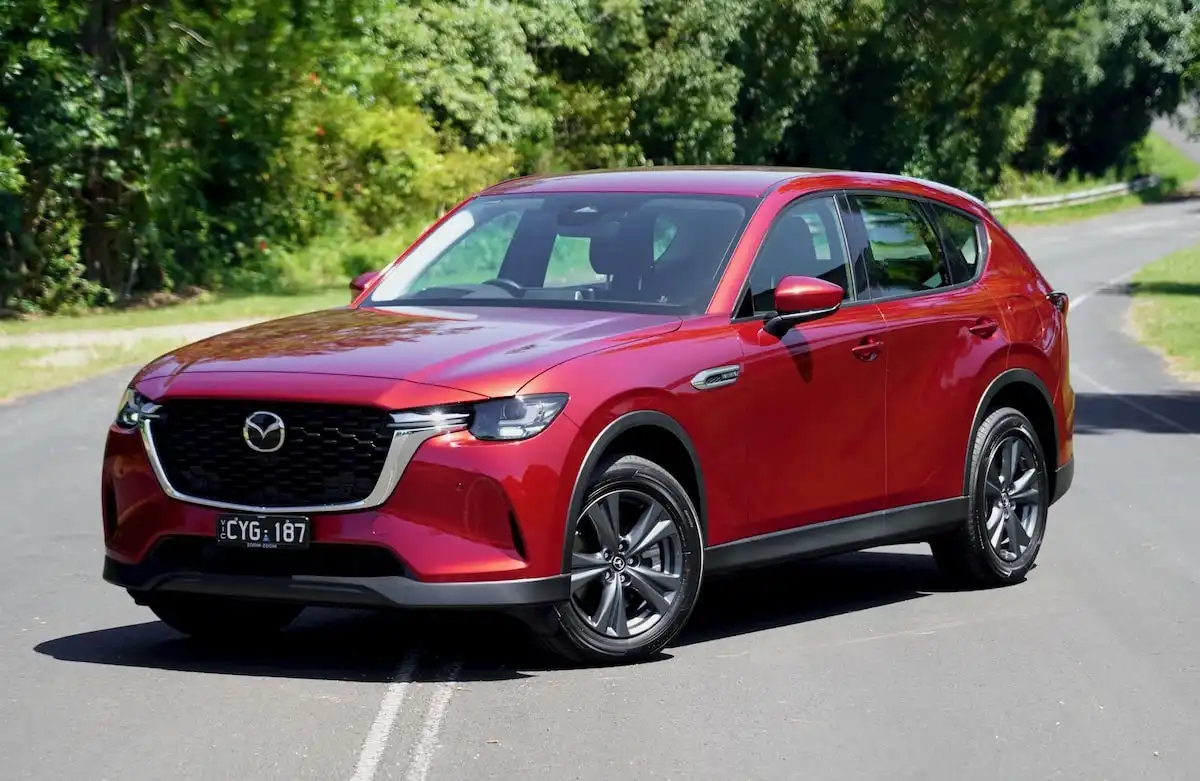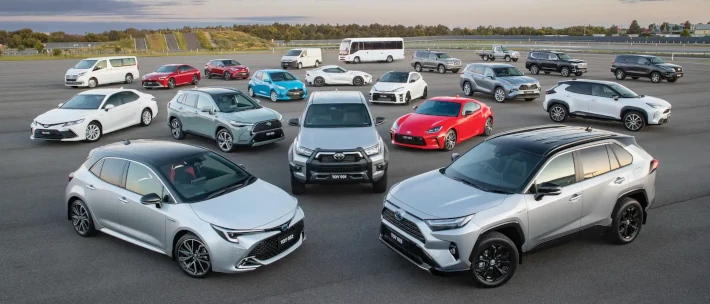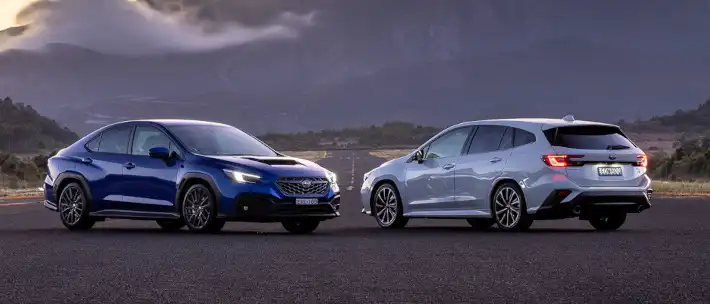With its sharp, futuristic styling and the recent addition of hybrid options across every trim level, including the base model, the Kona is a great on-paper option for small SUV buyers.
It’s a well-populated lineup, with Hyundai serving up four different variants and the choice of three engines that give buyers a wide range of Kona options across a multitude of budgets.
With no shortage of competitors in the world of small SUVs, the Kona has its work cut out to impress buyers when it comes to not only value but practicality, fuel economy and driving fun.
How does the latest MY25 Hyundai Kona stack up as a competitive small SUV package for Australian buyers? Let’s take a closer look to find out.
Hyundai Kona Competition
Hyundai Kona |
VS |
Kia Seltos |
| Toyota Corolla Cross | ||
| Nissan Qashqai | ||
| GWM Haval Jolion | ||
| Mitsubishi Eclipse Cross | ||
| Mazda CX-30 | ||
| Chery Omoda 5 | ||
| Suzuki Vitara |
How Much Does the Hyundai Kona Cost?
Prices for the MY25 Hyundai Kona kick off from $32,500 for the entry-level Kona 2.0 Petrol while both the Kona 1.6 Hybrid and Kona N Line 2.0 Petrol are priced at $36,500.
Hyundai’s Kona Premium 2.0 Petrol is priced at $39,500.
Stepping up to the Kona N Line 1.6 Hybrid or N Line 1.6T AWD brings the price to $40,500.
The Kona N Line Premium 2.0 Petrol is priced at $42,500 while the range-topping Kona N Line Premium Hybrid and Kona N Line Premium 1.6T AWD are priced at $46,500.
-
Kona 2.0 Petrol - $32,500
-
Kona 1.6 Hybrid - $36,500
-
Kona N Line 2.0 Petrol - $36,500
-
Kona Premium 2.0 Petrol - $39,500
-
Kona N Line 1.6 Hybrid - $40,500
-
Kona N Line 1.6T AWD - $40,500
-
Kona N Line Premium 2.0 Petrol - $42,500
-
Kona Premium 1.6 Hybrid - $43,500
-
Kona N Line Premium 1.6 Hybrid - $46,500
-
Kona N Line Premium 1.6T AWD - $46,500
Keep in mind that these prices are subject to change and do not include on-road costs.
How Much Can OnlineAuto Save You?
Using OnlineAuto’s car buying service, you could save thousands on your next car with the help of our team of car-buying specialists.
Hyundai Kona Hybrid Specifications
| Model Date | 2025 |
| Make | HYUNDAI |
| Model | KONA |
| Series | SX2.V2 MY25 |
| Variant | HYBRID |
| Body | 4D WAGON |
| Fuel type | UNLEADED PETROL/ELECTRIC |
| Transmission | 6 SP AUTO DUAL CLUTC |
| Drive | FWD |
| Engine | GDi |
| Engine capacity | 1580 |
| Engine configuration | VARIABLE DOUBLE OVERHEAD CAM / 16 valves |
| Engine RPM | 5700.0 / 4000.0 |
| Cylinders | 4 |
| Torque | 144 |
| KW | 77 |
| Fuel tank size | 38.0 |
| Fuel usage specs | 3.9 / 0 |
| CO2 | 89 |
| ANCAP security rating | 4 |
Get in touch with one of our Car Buying Specialists today.
Request a quoteWhat Features & Specs Does the MY25 Hyundai Kona Have?
Hyundai’s entry-level Kona 2.0 Petrol & 1.6 Hybrid come riding on a set of 18-inch alloys and receive LED head & tail lights with LED daytime running lamps, adaptive cruise control, a surround-view monitor with parking sensors, cloth upholstery with leather armrests, keyless entry & start, a 4.2-inch digital instrument cluster and a stack of safety equipment we’ll cover later.
Upgrading to the Kona Premium range adds projector LED headlights with LED indicators, leather upholstery with a power-adjustable driver’s seat as well as heated and ventilated relaxation seats, a heated steering wheel, heated rear seats, ambient lighting, a 12.3-inch digital instrument cluster, an LED light strip on the front grille, a powered boot lift, side parking sensors and some added safety equipment.
The Kona N Line range picks up 19-inch alloys - 18-inches for the Kona N Line Hybrid - as well as a bespoke body kit with a rear spoiler, twin chrome exhaust pipes, body-coloured wheel arches, a mix of leather and Alcantara upholstery, alloy pedals, an upgraded N steering wheel, dark metal trim with a black headliner and red air vents.
2025 Hyundai Kona Connectivity & Infotainment Features
All members of the MY25 Hyundai Kona range come packaged with a 12.3-inch touchscreen infotainment display that sits atop the climate control panel on the dashboard.
It’s a large, bright and responsive display that is a particularly welcomed addition to entry-level versions of the Kona which means price-conscious buyers won’t miss out on the action.
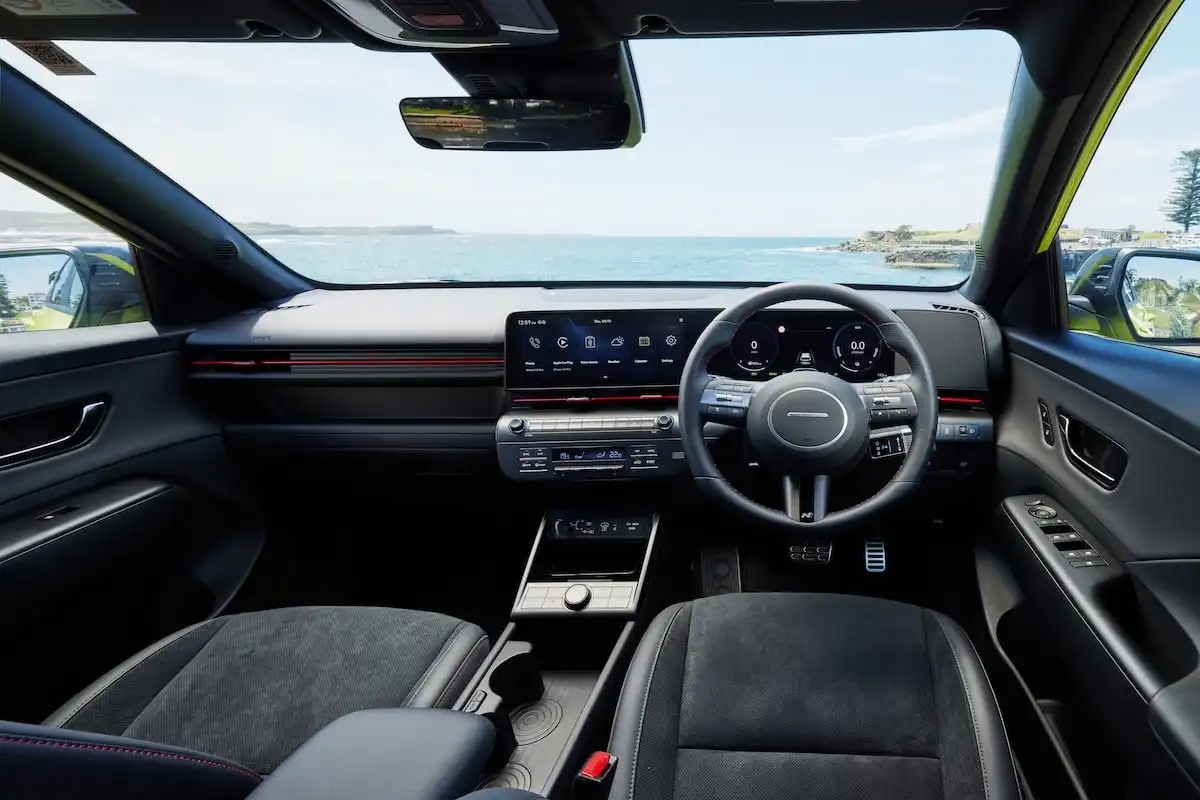
Hyundai’s 12.3-inch infotainment system offers AM/FM and DAB+ digital radio and is paired with a six-speaker sound system in the base model.
Upgrading to the Kona Premium range adds connected satellite navigation and a more powerful eight-speaker sound system courtesy of BOSE.
Kona buyers also pick up a subscription to Hyundai’s Bluelink connected services suite for five years after purchase; far longer than you’ll typically get from the manufacturer.
Hyundai’s Bluelink connected service offers vehicle location tracking, remote climate controls, connected routing and remote vehicle diagnostics.
Does the Hyundai Kona Have Wireless Apple CarPlay & Android Auto?
Buyers will be pleased to know that all members of the Hyundai Kona range, from the entry-level 2.0 Petrol & Hybrid to the range-topping N Line Premium receive wireless Apple CarPlay & Android Auto connectivity.
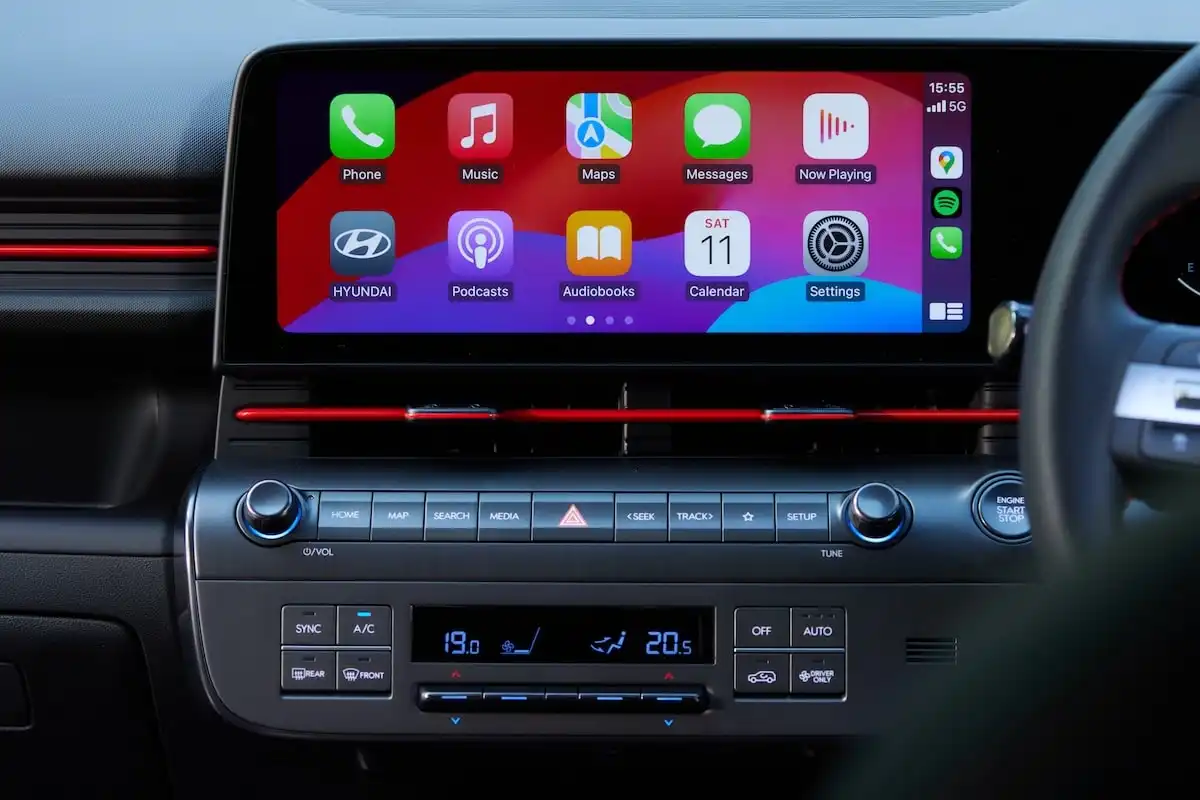
Hyundai’s 12.3-inch infotainment system supports wireless Apple CarPlay & Android Auto connections allowing you to climb aboard and access your music, navigation apps and contacts while your phone stays in your pocket.
Is the Hyundai Kona Comfortable to Drive?
The Hyundai Kona strikes a great balance between a fun-loving driving package while remaining extremely well-mannered around town.
Buyers have the option of three engines powering the Kona range, with the cheapest version receiving a 2.0-litre four-cylinder petrol underneath the bonnet that pushes out a modest 110kW of power and 180Nm of torque to the front wheels via a CVT automatic.
Upgrading to the Kona 1.6T AWD range adds a perkier 1.6-litre turbocharged four-cylinder petrol engine that sends 146kW of power and 265Nm of torque to all four wheels via an eight-speed automatic.
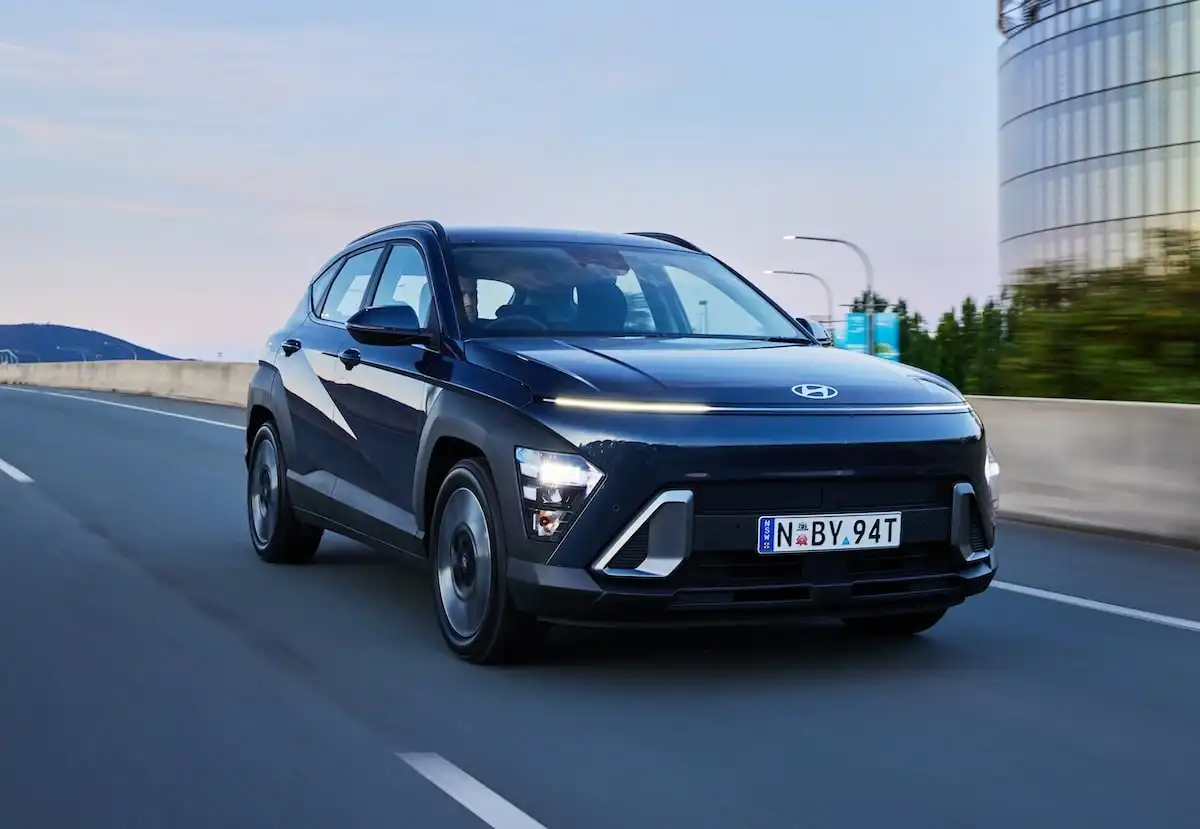
The third and final Kona engine option comes in the form of a 1.6-litre four-cylinder petrol engine paired with an electric motor, 1.32kWh battery pack and six-speed dual-clutch transmission that gives the Kona Hybrid outputs of 104kW and 265Nm, respectively.
Power in the entry-level Kona 2.0 Petrol is nothing to get too excited about, especially being coupled with a rather uninspiring CVT automatic, though it gets the job done for buyers on a budget.
The 1.6-litre turbocharged engine gives the Kona far more personality on the road as well as the added confidence of an all-wheel drive system, while the Kona Hybrid is by far the most refined member of the range thanks to its smooth, electric-assisted acceleration.
Whichever engine you opt for in the Kona range, it’s a well-credentialed little SUV that is incredibly easy to park thanks to its stout wheelbase and lightweight steering rack.
Underneath, the entry-level Kona picks up a rear torsion beam suspension package while the Hybrid and 1.6T receive a sportier multi-link system at the rear.
This makes the base model better suited to everyday driving through the urban jungle while its more premium siblings provide far more engagement out on the open road.
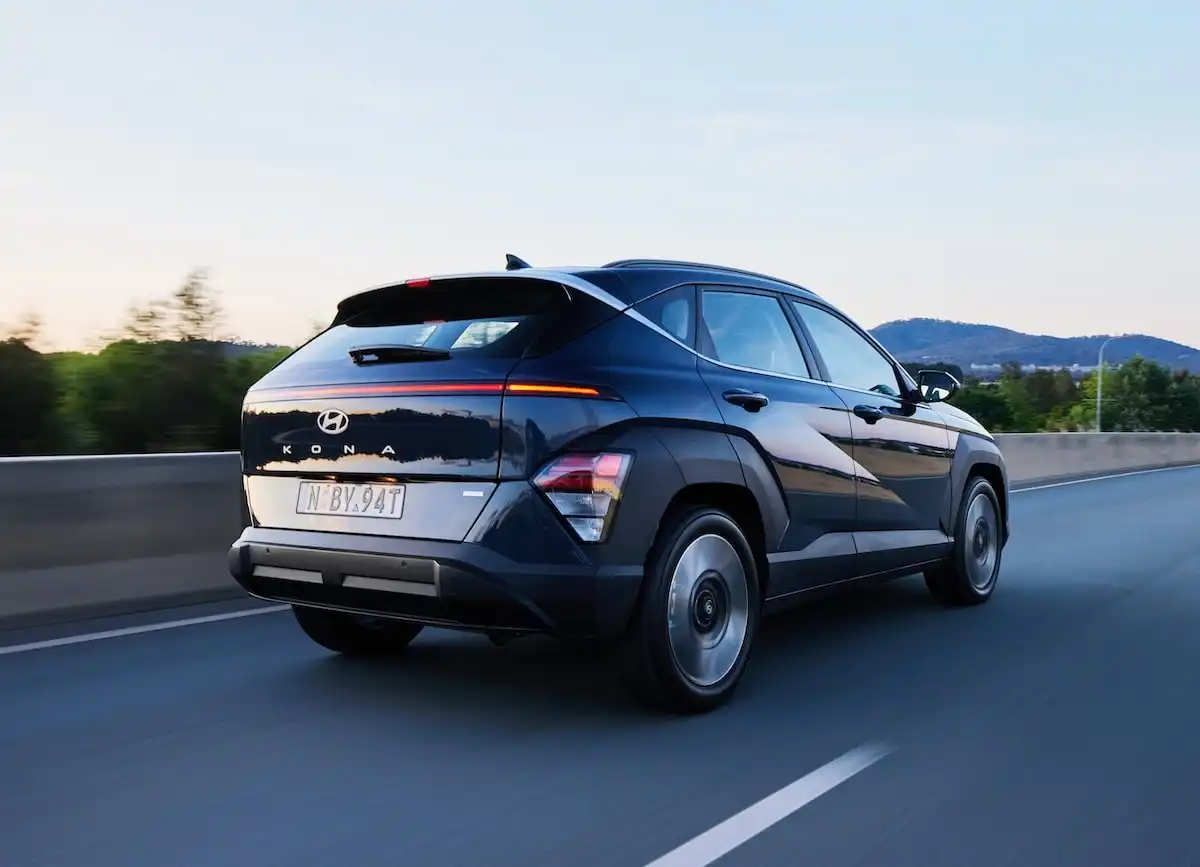
On the highway, the Kona is a confident little SUV package with decent overtaking power while benefiting from a local suspension tune specifically for Australia that means it’s not afraid to hit country B-roads.
Overall, the ride quality strikes a nice blend of comfort around town while offering more confidence when pushing in the corners, particularly in the 1.6T with its all-wheel drive system.
Hyundai has done well to make a small SUV package that is both user-friendly around town and versatile enough to keep enthusiasts happy when leaving the urban jungle in the rearview.
Is the Hyundai Kona Fuel Efficient?
Fuel efficiency in the Hyundai Kona range depends on which engine you’re opting for.
The base model with its 2.0-litre four-cylinder petrol is reasonably fuel efficient, consuming 6.6L per 100km on a combined cycle.
The pursuit of added performance in the Kona 1.6T AWD means fuel economy figures rise up to 7.6L per 100km, though all things considered, that’s not bad for a turbocharged, all-wheel drive package.
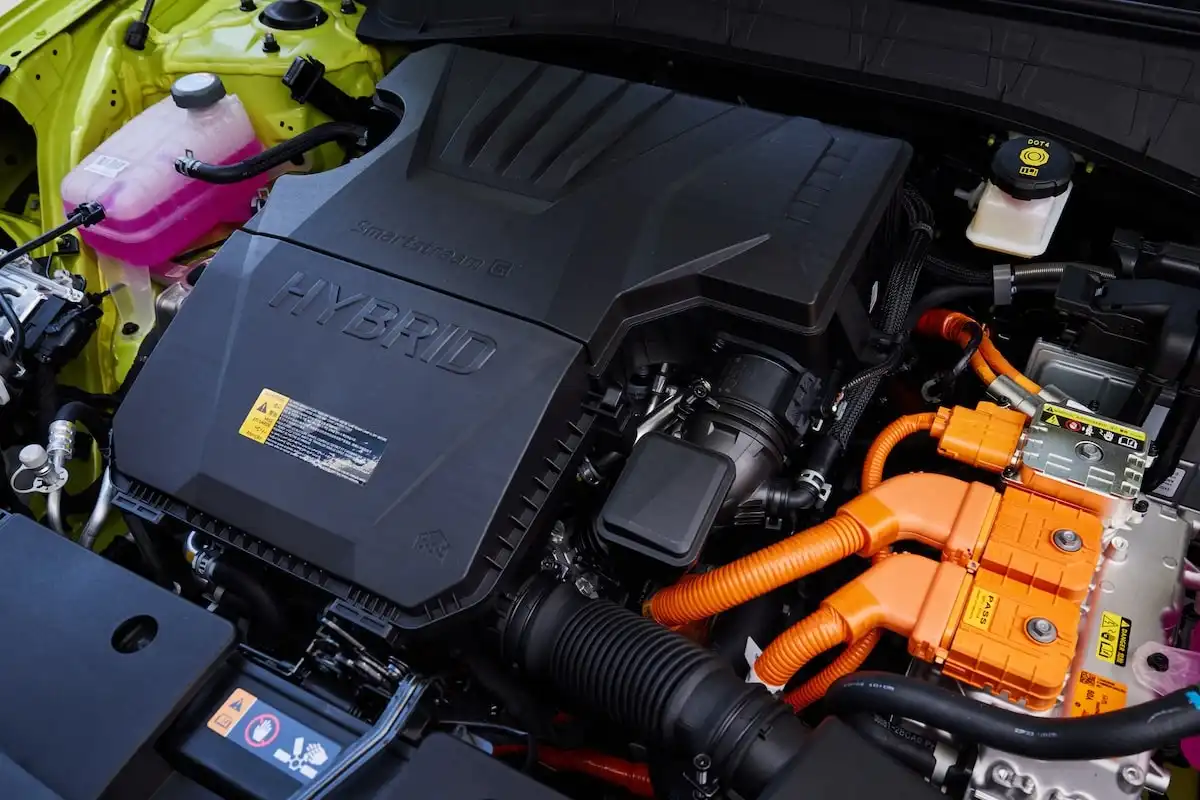
It goes without saying, though, that the Kona Hybrid is the most fuel-efficient member of the range, sipping a claimed 3.9L per 100km on the combined cycle - representing by far the best option for buyers in the context of fuel economy figures.
-
Kona 2.0 Petrol - 6.6L/100km
-
Kona 1.6T AWD - 7.6L/100km
-
Kona Hybrid - 3.9L/100km
Is the Hyundai Kona Practical and Spacious?
While the majority of compact SUVs offer some compromise when it comes to practicality, the Hyundai Kona offers some pretty generous acreage for the segment.
Climb aboard and the Kona’s cabin is a particularly modern affair that looks great - even in base form.
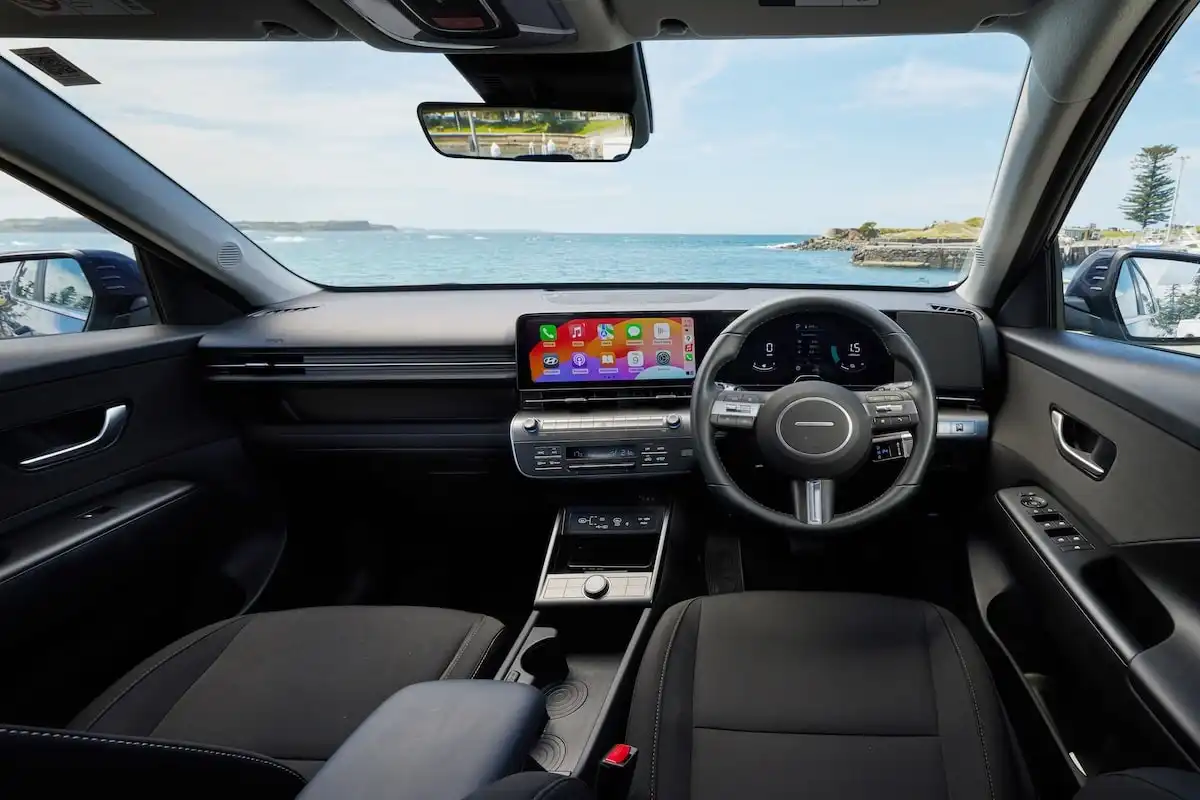
Hyundai’s tech-heavy packaging gives the driver a digital instrument cluster paired with the 12.3-inch infotainment system and physical buttons below for the climate settings.
Thanks to the Kona’s bubbly roofline, headroom in the front of the cabin is decent, even for super-tall drivers while providing excellent forward and side visibility.
The Kona’s ergonomics are great, with even the entry-level Kona 2.0 picking up leather touchpoints for your elbows, while the cloth upholstery upgrades to leather and even Alcantara in more premium versions.
Storage options are solid, too, with a tray hiding behind the gear lever, a pair of cupholders, added storage inside the folding armrest and a tier of storage above the passenger’s glovebox.
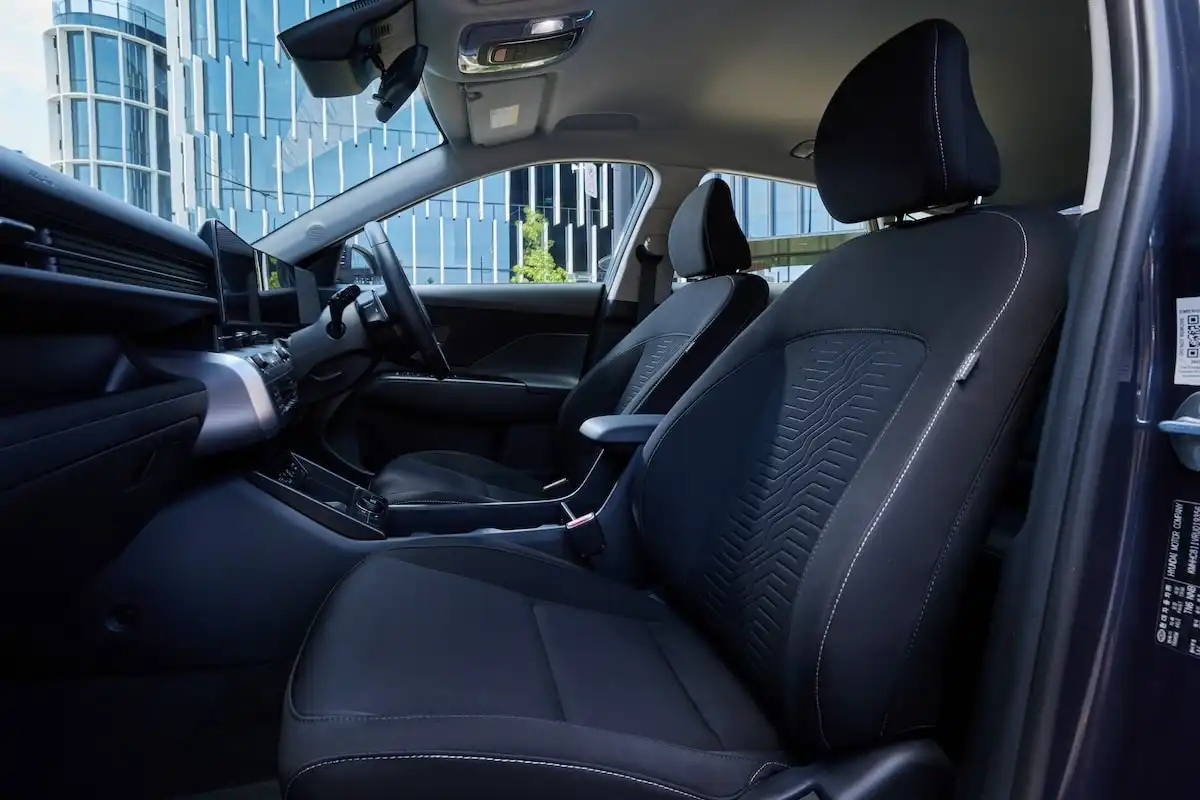
There’s also a pair of bottle holders and storage bins in the door sills that are particularly spacious.
Thanks to a key update for the latest-generation Kona, the overall footprint has been stretched out, offering some material practicality improvements inside the rear of the cabin.
Over the previous version, the MY25 Kona range is 145mm longer than its replacement, with the wheelbase growing by 60mm.
The end result is solid legroom for rear passengers - a difficult feat for the compact SUV segment.
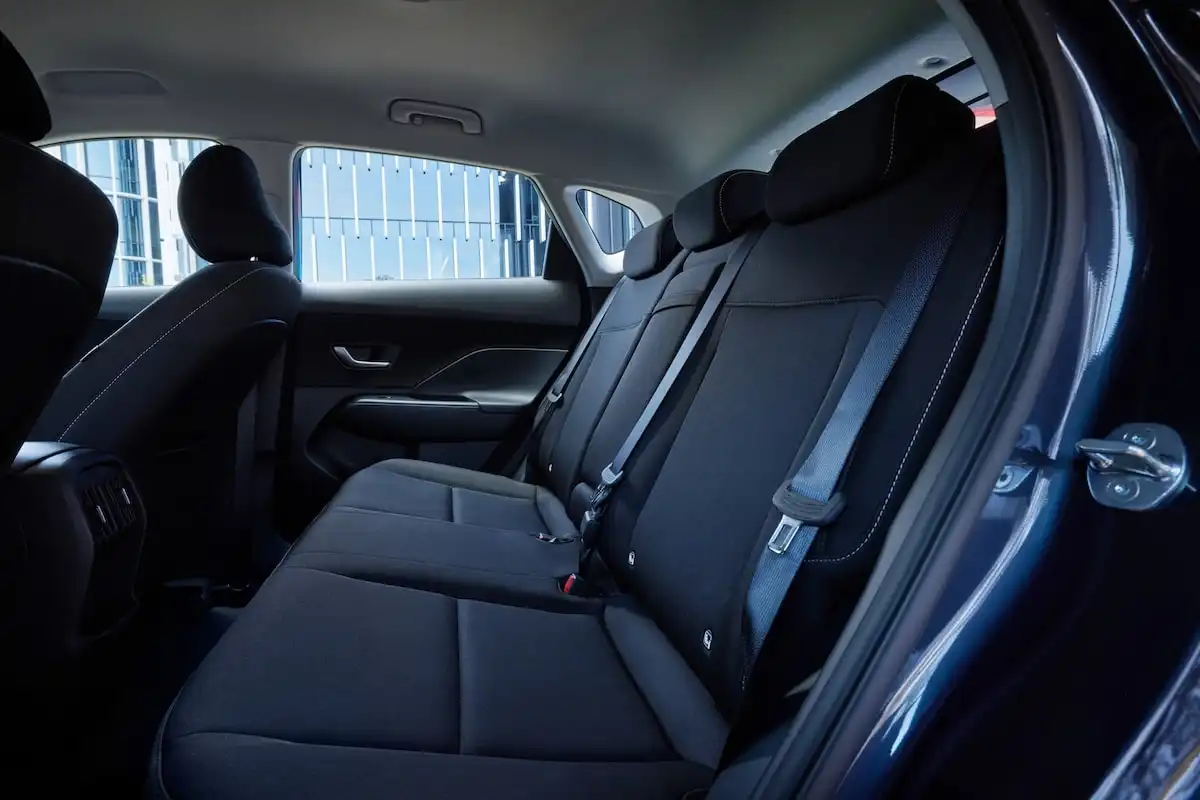
Adults can sit behind an adult without much of an issue while headroom remains healthy for tall adults in the rear.
Amenities in the Kona’s second row includes a pair of USB-C charging ports, air vents, map pockets and compact door bins.
For the parents out there, the Hyundai Kona’s second row is packaged with two pairs of ISOFIX anchors as well as three top tether mounts hiding on the seatback.
How Big is the Hyundai Kona’s Boot?
Once again, the Hyundai Kona impresses when it comes to boot space in a small SUV package.
With the rear seats standing, there’s 407L of cargo space on offer which certainly isn’t ground-breaking but remains solid for the compact SUV segment.
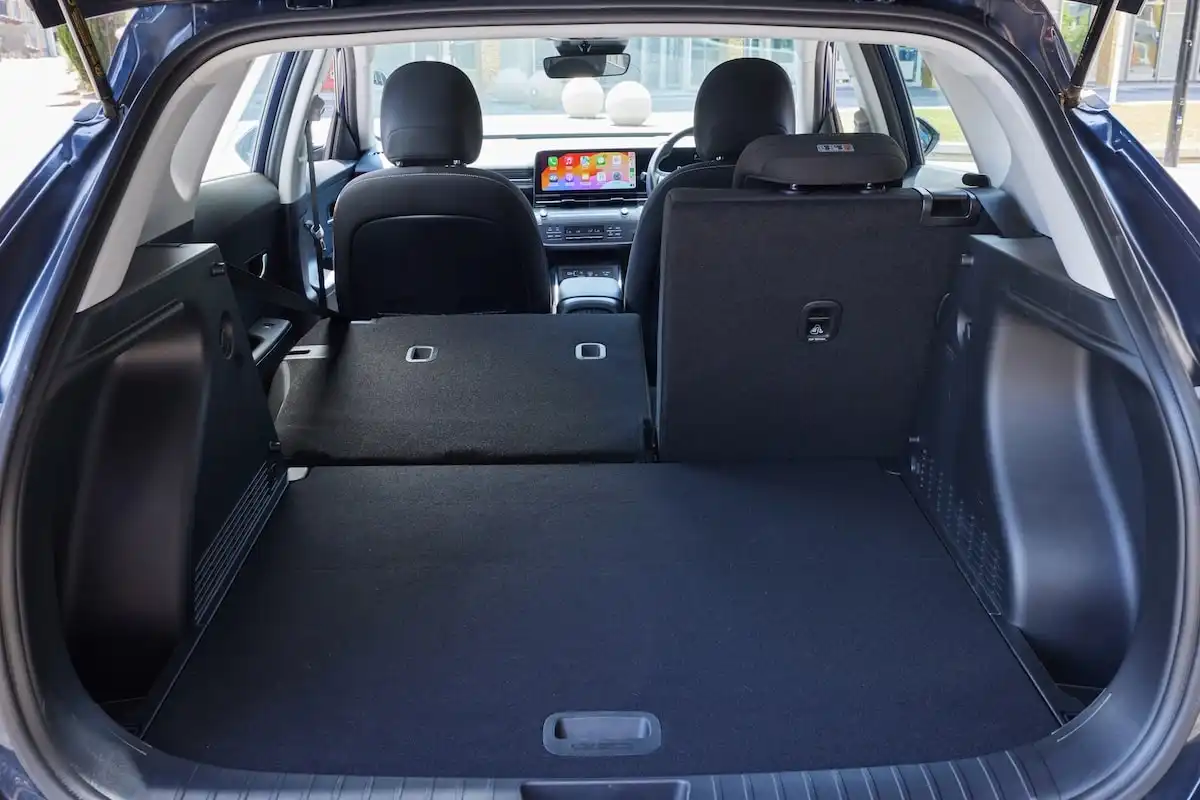
Fold the rear seats down and you’ll unlock 1,241L of boot space when it’s time to lug around sports gear, camping equipment, surfboards or a run to the hardware store.
-
Hyundai Kona Boot Space Minimum: 407L
-
Hyundai Kona Boot Space Maximum: 1,241L
Is the Hyundai Kona Safe?
Safety equipment has also taken a leap forward in the latest-generation Kona range.
While Hyundai is happy to throw a boatload of safety equipment in the base model, some key features are reserved for higher-ranking members of the Kona range.
The entry-level Kona is packaged with autonomous emergency braking with pedestrian & cyclist detection as well as junction assist, while blind-spot monitoring and adaptive cruise control are also bundled in.
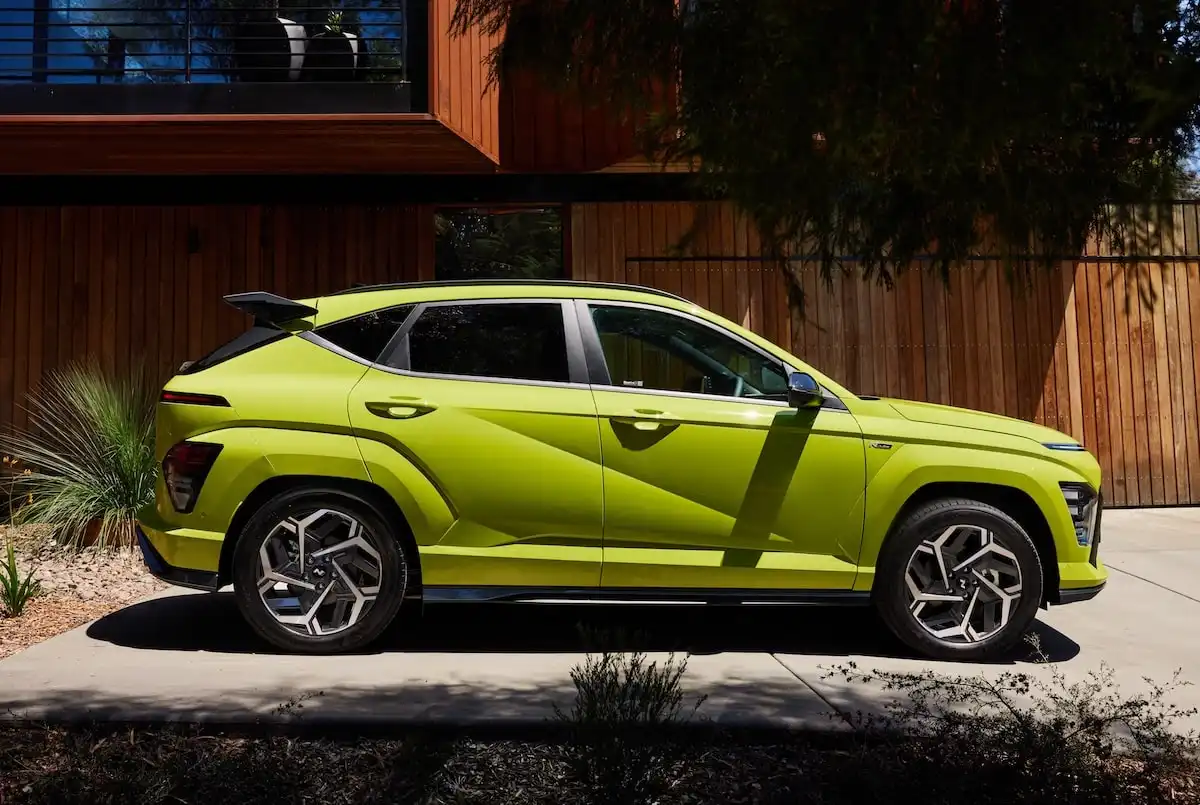
Buyers also pick up rear cross-traffic alerts, lane-keep assistance with lane-centring, a surround-view monitor with parking sensors, safe exit warnings, rear occupant alerts, driver attention monitoring and seven airbags.
Upgrading to the Kona Premium adds a blind-spot view monitor with reverse autonomous emergency braking and a 3D surround-view monitor and side parking sensors.
Does the Hyundai Kona Have an ANCAP Safety Rating?
The Hyundai Kona range wears a four-star ANCAP safety rating after testing in 2023 saw it score the following marks.
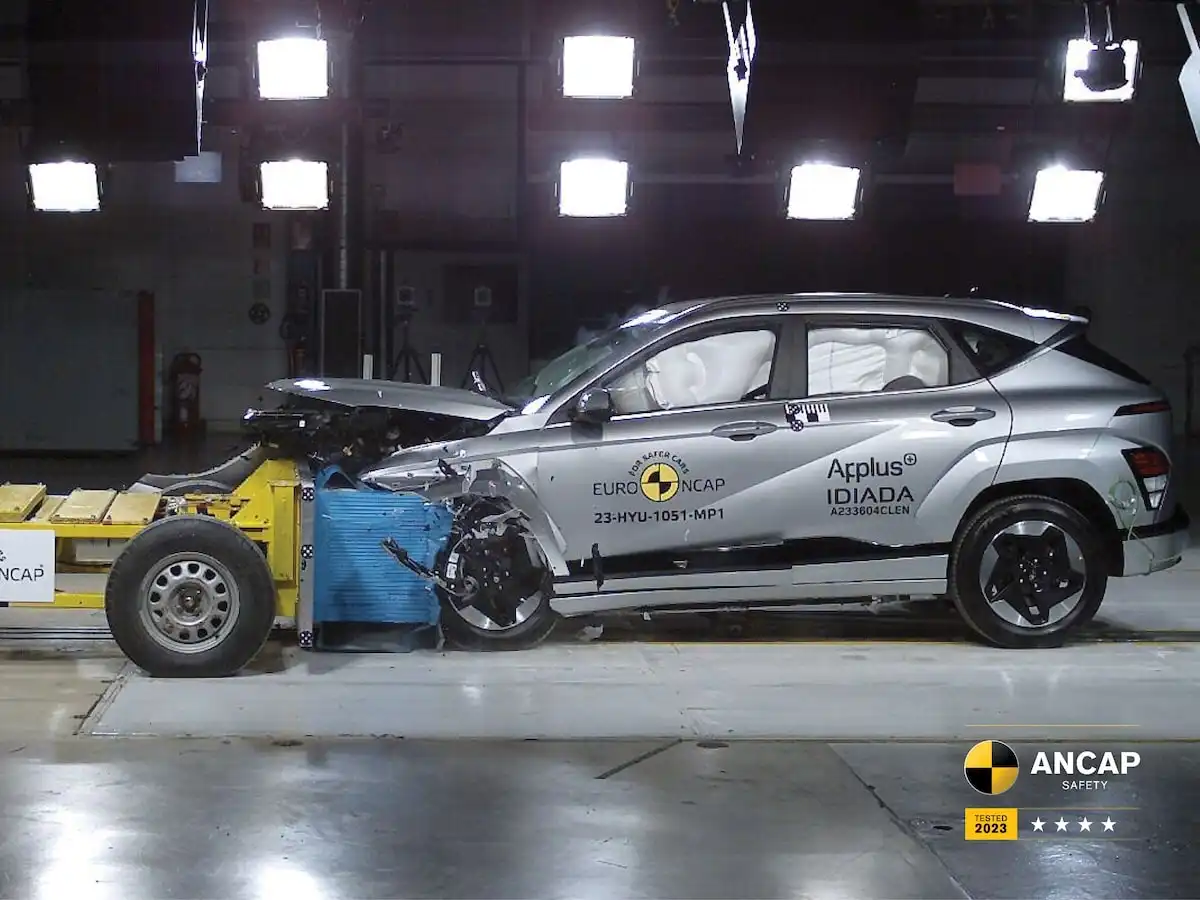
-
Adult Occupant Protection: 80%
-
Child Occupant Protection: 84%
-
Vulnerable Road User Protection: 64%
-
Safety Assist: 62%
What Warranty Does the Hyundai Kona Come With?
Hyundai offers the MY25 Kona range with a five-year/unlimited-kilometre warranty, while buyers of the Kona Hybrid pick up an eight-year/160,000-kilometre for the hybrid battery pack.
The company also gives buyers capped-price servicing for five years.
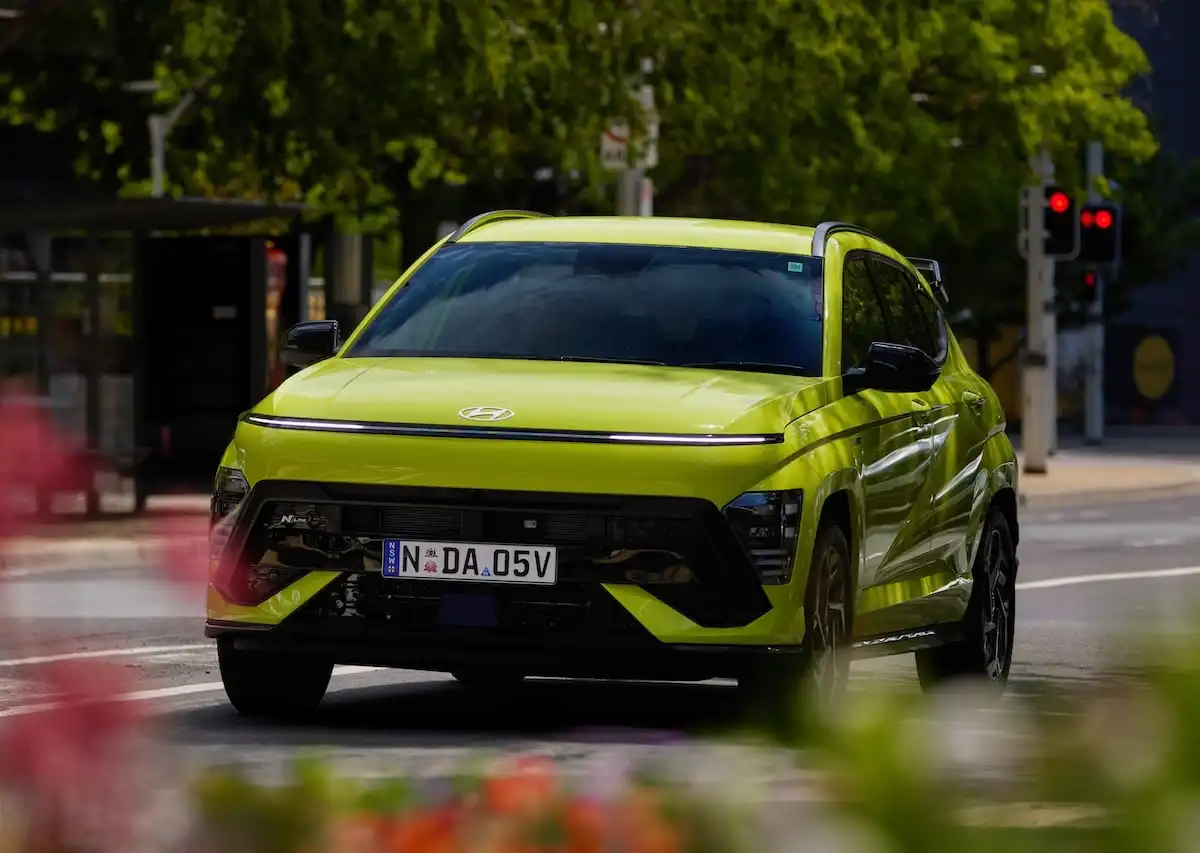
Servicing costs for the Kona 2.0 Petrol and 1.6T AWD stand at $399 per visit, totalling $1,995 over the course of five years.
The Kona Hybrid is more expensive to service, totaling $2,535 over five years.
Servicing intervals for the Kona 2.0 Petrol & Hybrid stand at 12 months or 15,000-kilometres which drop to 10,000-kilometres in the case of the Kona 1.6T AWD.
Our Verdict: Is the Hyundai Kona Worth it?
The latest-generation Hyundai Kona is a great little SUV package that offers a great mix of value, comfort and practicality.
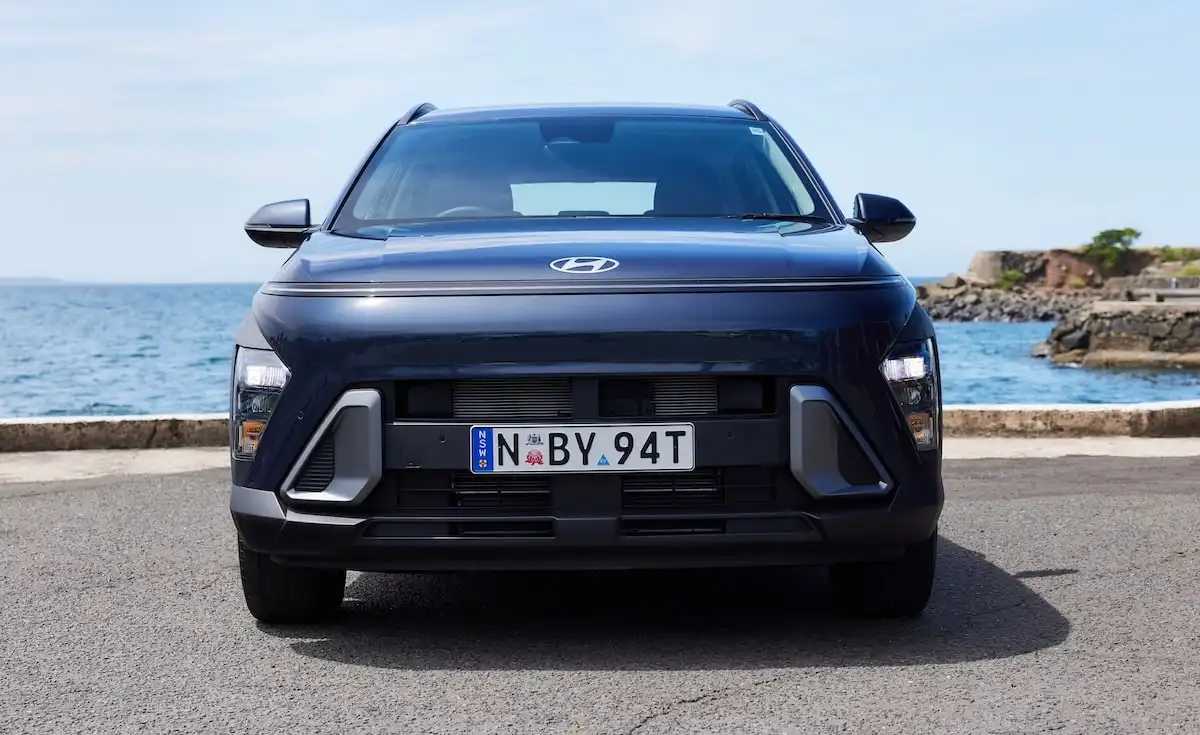
With an affordable base model, a sportier turbocharged version and a super fuel-efficient hybrid, there’s a Kona variant for every buyer out there while the spacious cabin makes it incredibly competitive in the compact SUV segment.
Hyundai’s generous approach to features also means that the entry-level Kona won’t leave buyers disappointed while offering a tonne of premium touches as you step up higher into the range.
As a result of the Kona’s charming personality, refinement around town and feature-packed offering, we can’t help but recommend you add the Kona to your small SUV shortlist.
If you’re looking to upgrade to a new car, be sure to reach out to one of our car-buying experts who can help secure you the best price.
Five Hyundai Kona Specs You Need to Know
-
Five-year/unlimited-kilometre warranty
-
Eight-year/160,000-kilometre hybrid battery warranty
-
3.9 - 7.6L/100km fuel economy (Hybrid vs 1.6T AWD)
-
407 - 1,241L boot space
-
Four-star ANCAP safety rating
Get in touch with one of our Car Buying Specialists today.
Request a quote